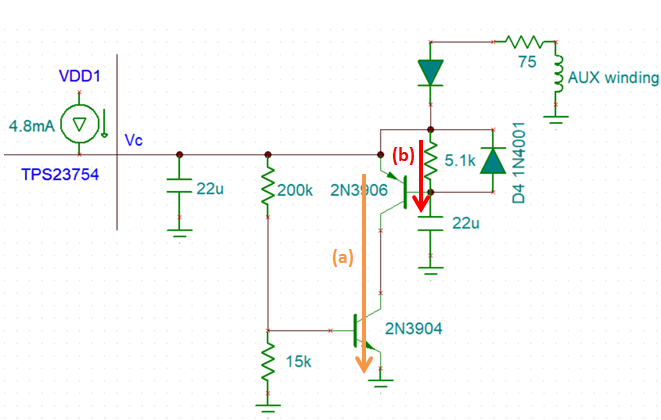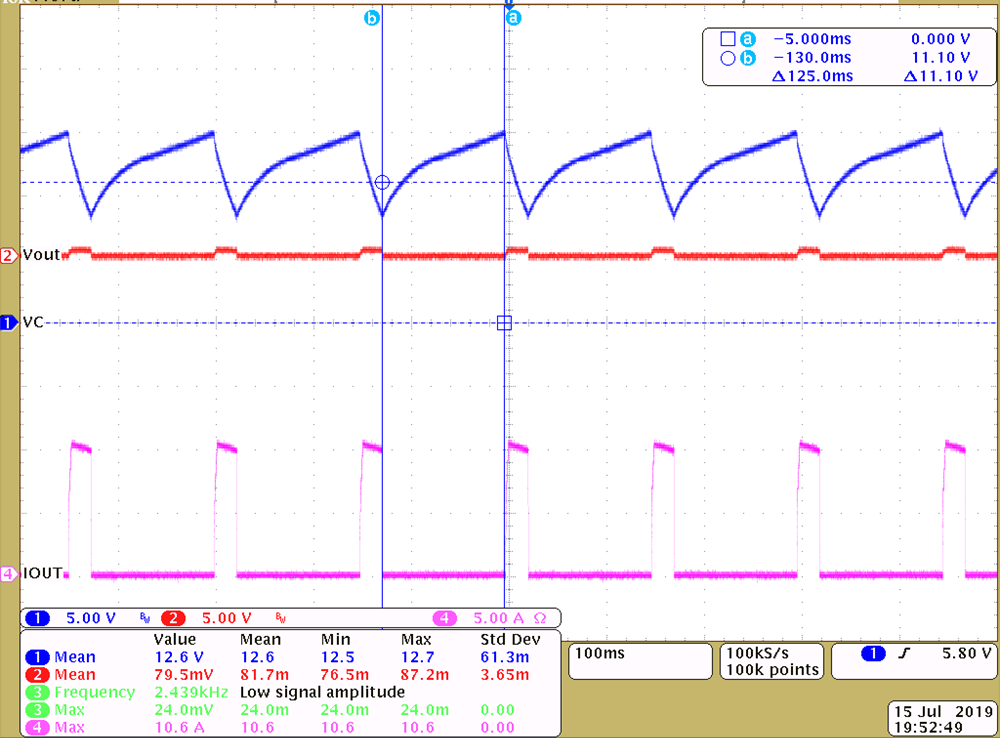SLVAEE5 June 2020 TPS23754
4 Alleviating the Thermal Concern at Short Circuit Condition
Decreasing Cvc will increase the frequency of hiccup OCP. Conversely, the frequency of hiccup OCP will decrease by increasing Cvc, but make longer duration of peak fault current. Whatever increasing or decreasing Cvc, the duty cycle of the hiccup OCP is almost the same. The heat issue could not be alleviated. This paper introduces the way how to adjust the duty cycle of peak fault current duration.
In Figure 7, use the 2N3906’s emitter-base diode in parallel with 5.1k to create a current source as current path (b) as 0.6V/5.1k = 117uA.
The rest of current from internal current source is passed through the current path (a).
 Figure 7. The External Discrete Hiccup Circuit
Figure 7. The External Discrete Hiccup Circuit The new current source is to create the longer recharging time as OFF time of the hiccup OCP, getting a lower average fault current and alleviating the thermal concern on Synchronous FET or Rectifying Diode at secondary. The waveform is shown in Figure 8 and the thermal picture is shown in Figure 9.
 Figure 8. The Hiccup OCP Waveform with External Hiccup Circuit
Figure 8. The Hiccup OCP Waveform with External Hiccup Circuit  Figure 9. IR Thermal Photo with External Hiccup OCP Circuit
Figure 9. IR Thermal Photo with External Hiccup OCP Circuit